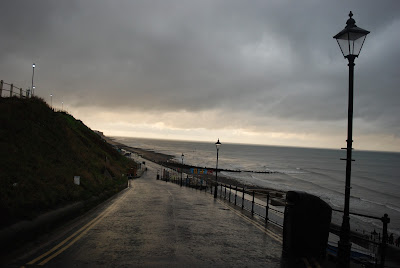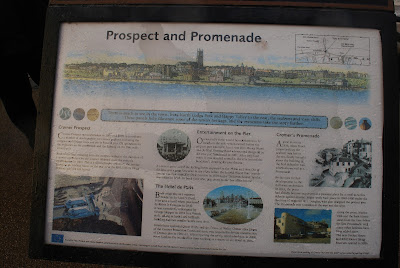Cromer Promenade
Like any coastal town Cromer benefits from the sea but is also characterised by the steps that it takes to protect itself from it's extremes. A huge storm in 1836 destroyed much of Cromer's seafront and prompted efforts to bolster its sea defences including the tiered flint walls that I was looking at from the pier.
 The pier itself was built around 1900 to replace an older one that had been damaged beyond repair. The walls that the waves smash against were refaced as part of a major regeneration project from 2013-2015 following another major storm.
The pier itself was built around 1900 to replace an older one that had been damaged beyond repair. The walls that the waves smash against were refaced as part of a major regeneration project from 2013-2015 following another major storm.I couldn't find any sign of the window. There was a large noticeboard which was still just about legible despite the raindrops. It describes the compass, pier entertainment, the grand Hotel de Paris that sits above, the rebuilding after 1836 and the lifeboat museum. To my frustration though, there was nothing regarding the arch that I remembered. At least I thought I remembered.
I decided to retrace my steps from that earlier visit so I descended to the pier. The clouds were clearing and the sun shone through creating a rainbow which my photo here doesn't really do justice. I squinted back through the haze toward the wall. For a moment I thought I must have imagined it. I changed my position slightly and suddenly it made sense.
I climbed back up the staggered path. There was an eerie light as the late sun shone in patches across the beach and the hill beyond.
"Could you see it?" my family asked when I got back to them. Sheepishly, I explained that there was no window and that what we had seen was just the silhouette of the noticeboard. To their credit no one tried to throttle me and we wandered off into the town centre to do normal things.
Holes by Mercury Rev.














Yes and interesting mystery for Halloween and appropriately moody photos.
ReplyDeleteThanks! It's interesting how our brains interpret ill defined objects in our field of vision. There might be more stories like this as my eyesight gets worse.
Delete